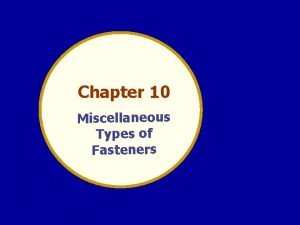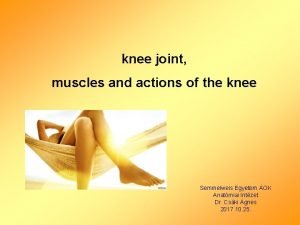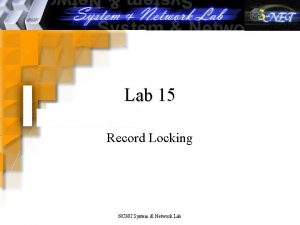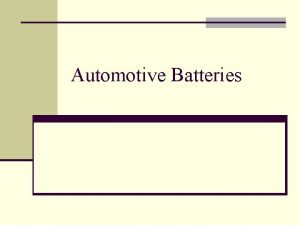Automotive Grade 10 Joining MethodsLocking Devices Locking devices







- Slides: 7

Automotive Grade 10 Joining Methods(Locking Devices)

Locking devices • We use locking devices to prevent nuts from wearing loose due to movement and vibration. They can be divided into three main groups: friction-locking devices, positive-locking devices and wiring.

Friction locking devices • These consist of four main groups: § lock nuts § Stiff nuts (which resist coming loose) § Special washers. Lock nuts are used to lock up against an ordinary nut to jam it against the bolt or stud. They are slightly thinner than full nuts. Stiff nuts have their own resistance to torque by means of a nylon insert ( Nylock nuts) or slit head, like the Aero nuts. This prevents them from coming loose as a result of vibration or movement.

Washers Many different types of special washers are used as friction locking devices. We will look at the spring washer and serrated (or toothed) washer. The diagram illustrates one of the more common types of spring (or lock) washers used in engineering. Serrated washers These washers are designed for more specialised applications and are usually designed for specific bolt or screw head types and nuts.

Positive locking devices These devices tighten nuts very securely and can be diivided into four main categories. 1. Slotted nuts These nuts use split pins (as seen in figure 5. 12) to secure them in the required position.

2. Crowned nuts These are commonly used on the end of automobile stub axles to retain the hub assembly. As in the previous example, a split pin and slotted round section are used to prevent the nut loosening due to the rotation of the wheel. 3. Tab washers have a small tip which fits into a recess next to the nut. Once the nut is tightened, the sides of the washer are bent up (spoiled) against the flats of the nut to prevent unwanted rotation.

4. Lock plate A lock plate functions similarly to a tab washer. Once the nut is tightened as required, the lock plate is inserted on either side of the flats of the nut and screwed down to prevent unwanted rotation or loosening.













